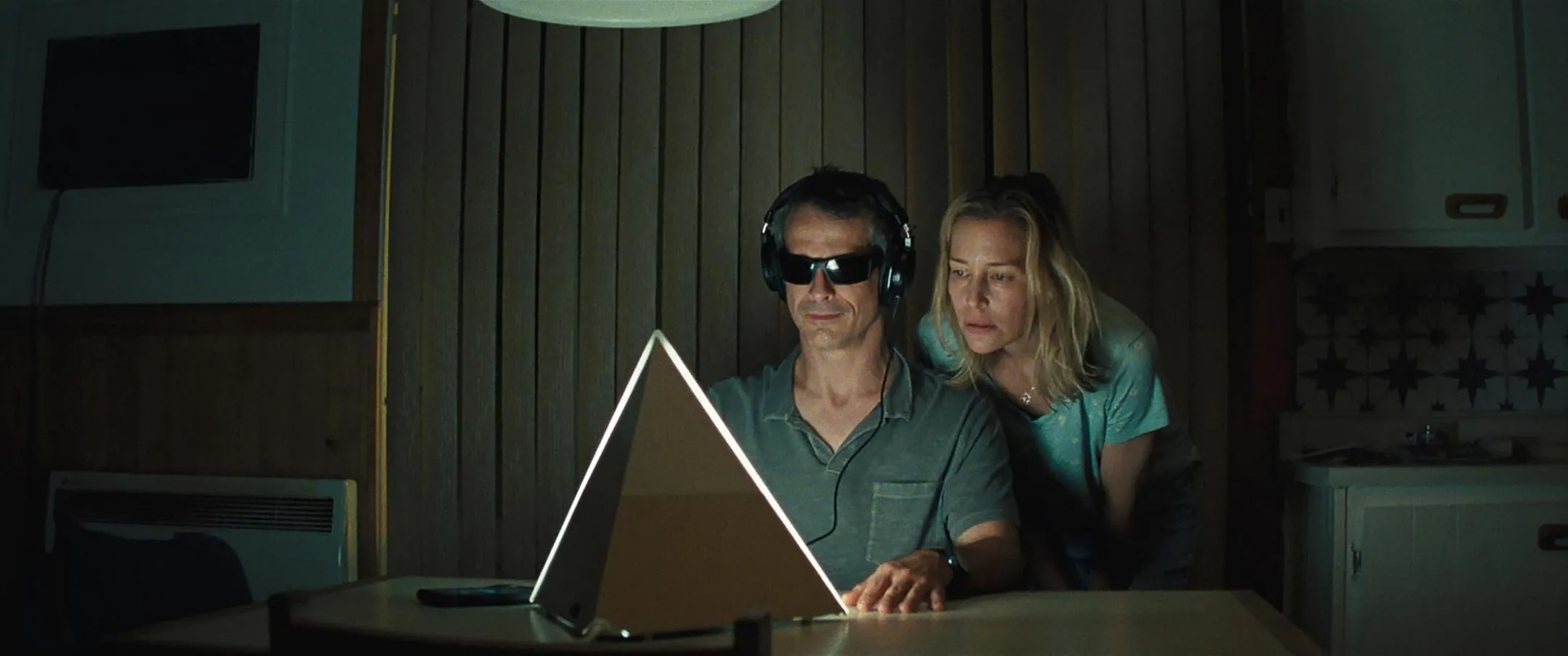Anne Émond’s Peak Everything opens on Adam Tremblay, a 45-year-old kennel owner whose days bleed together under a cloud of climate dread. Shot in Quebec’s outlying countryside, the film marries a light romance to the rumble of storms and tremors—real and imagined—suggesting that personal hope can emerge even as the world feels unmoored.
When Adam’s therapeutic lamp fails, he dials customer service and meets Tina, a spirited support agent whose sunny voice pierces his gloom. Their phone exchanges—underscored by distant thunder—set a tone where grounded emotion meets surreal spectacle.
Émond balances a small-town feel with hints of looming disaster, inviting viewers to consider how love and anxiety coexist in an era when global cinema, from Bollywood to European art houses, is embracing stories of inner and outer turmoil.
Characters in Contrast
At the center is Patrick Hivon’s Adam, whose quiet routine—walking dogs, visiting his unempathetic father—masks a restless spirit. Hivon relies on micro-expressions: a half-smile after an earthquake, a lingering gaze at empty sky, capturing a man caught between resignation and yearning.
Opposite him, Piper Perabo’s Tina brings warmth; her crackling energy on the phone recalls Bollywood heroines who uplift heroes through song or spirited monologues. Yet Perabo hints at conflict: a glimpse of weariness when she returns to her family, echoing modern Hindi films such as Kadvi Hawa where domestic duty clashes with bigger dreams.
Gilles Renaud plays Adam’s father, a skeptic whose brusque advice roots Adam’s anxiety in generational divides familiar to Indian parallel cinema, where elders often embody tradition’s limits. Romy, the kennel assistant, provides comic relief through boundary-pushing antics—her impulsive flirtation with Adam mirrors the youthful impetuosity often seen in Hindi coming-of-age tales—while reminding us how community and absurdity can temper despair.
Anxiety, Connection, and Shifting Tones
Émond probes climate anxiety as personal crisis. Adam’s obsession with planetary collapse echoes global unease explored in films from An Inconvenient Truth to India’s Angry Indian Goddesses, where collective fear seeps into individual lives. Scenes of Adam bathed in pale lamp light, followed by cutaways to imagined storms, dramatize an internal cataclysm; these moments recall the psychological realism of Satyajit Ray’s quieter dramas, where environment mirrors emotion.
The phone bond between Adam and Tina becomes a lifeline—her laughter slicing through his isolation much as music often punctuates emotional breakthroughs in Bollywood. Yet the film shifts without warning into heightened territory: a pot-fuelled bust, a CGI-tinged earthquake, then back to hushed confessionals by candlelight.
This tonal oscillation keeps viewers off balance, reflecting a storytelling technique seen in parallel cinema’s willingness to mix the poetic with the prosaic. Moments of tenderness—a shared silence, a tear-stained smile—underscore that compassion, not catastrophe, lies at the film’s emotional center, prompting questions about whether love can truly outlast mounting crises.
Textured Imagery and Directorial Vision
Émond shoots on 35 mm, giving the film a softened grain that recalls the nostalgia of older Bollywood romances even as it frames rust-belt factories and snow-clad woods. Mundane interiors glow with warm ambers, while fantasy-scapes—Adam’s meditation tape visions—spill over in desaturated blues, suggesting an otherworldliness akin to the lyrical dream sequences of Pakeezah.
Sound design amplifies natural elements—the crack of thunder, dogs’ barks—as if the world itself demands to be heard, much like rustic soundscapes in regional Indian films that foreground locality over gloss. Editing alternates brisk cuts during action-set pieces with lingering takes in intimate dialogues, echoing the rhythm shifts of modern Bollywood dramas that intersperse high drama with reflective pauses.
Émond’s production design further blurs eras: analog gadgets sit alongside smartphones, farmyards sit against power plants—an ambiguity that underlines the film’s question of when—and if—our world tipped past its limit. Through these choices, Peak Everything stakes its place in a global cinematic conversation where cultural authenticity and universal anxieties converge.
Peak Everything is a Canadian romantic comedy that premiered in the Directors’ Fortnight section at the 2025 Cannes Film Festival on May 18, 2025. The film is scheduled for theatrical release in Canada on August 8, 2025.
Full Credits
Director: Anne Émond
Writer: Anne Émond
Producer: Sylvain Corbeil
Cast: Patrick Hivon, Piper Perabo, Connor Jessup, Gord Rand, Éric K. Boulianne, Gilles Renaud, Élizabeth Mageren
Director of Photography (Cinematographer): Olivier Gossot
Editor: Anita Roth
Composer: Christophe Lamarche-Ledoux
The Review
Peak Everything
Peak Everything is a tender, offbeat romance that powerfully captures one man’s struggle against rising dread, anchored by Patrick Hivon’s quietly magnetic performance and Piper Perabo’s infectious warmth. Anne Émond’s bold shifts between intimate drama and surreal spectacle may feel uneven at times, but they underscore the film’s core belief that human connection can shine even when the world feels unmoored.
PROS
- Patrick Hivon’s nuanced portrayal of eco-anxiety
- Piper Perabo’s warm, engaging presence
- Inventive blend of grounded emotion and surreal visuals
- Rich use of 35 mm grain to evoke nostalgia
- Sound design that makes nature feel alive
CONS
- Tonal shifts can feel abrupt
- Tina’s motivations occasionally under-explored
- Side plots sometimes distract from core romance
- Surreal set-pieces may test viewers’ suspension of disbelief
- Pacing wobbles between introspection and spectacle
